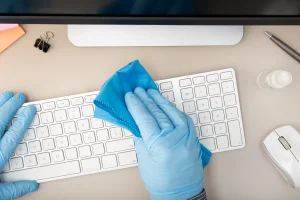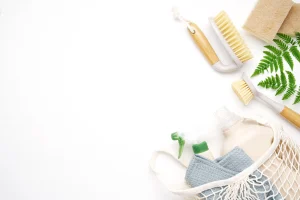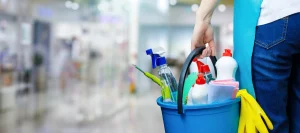2020 has been no stranger to different types of change. Perhaps you joined the many thousands and dabbled in a bit of DIY at home. Or maybe you haven’t had chance to redecorate but are wanting to do so ahead of Christmas. Well, before you break out the brushes and rollers, give the intended surface a thorough cleaning first.
But what is the best way to clean walls before painting? Read on to learn how to clean your walls properly before painting.
Are you unsure if you need to clean your walls before painting and would like to know what to use? While it may seem like a chore, cleaning is an important stage, as the paint is best applied to a clean surface, and its durability will be enhanced because of this. The most appropriate way to prepare a surface for painting often depends on the condition of the surface.
Exterior surfaces are typically more durable and can handle the punch of a jet washer, while drywall, wood panelling, and other interior materials should be handled a little more gently.
Five tips on how to prepare walls for painting:
-
Basic Scrub
In many instances, warm water and a sponge is all you need to make a wall paint-ready. Scrub the wall surface and be sure to clean corners and nooks well. But add a grease-cutting detergent to the water to remove scuffs and smears. Wipe clean with a damp towel afterward and allow it to dry completely before painting. This low-cost cleaning works well for adding a fresh coat to an already-painted space.
-
Ensure Mould and Mildew is removed
If there is residual mildew or mould (possible if repainting a bathroom, basement or other humid space), use a solution of three-parts water to one-part bleach. If this step is skipped, untreated mildew could grow through and affect the new coat of paint.
-
Chemical Clean
During a large-scale renovation, when particles, chemicals, and other materials may impact the integrity of your drywall, it’s best to wash the walls thoroughly with something stronger. Use a commercial cleaner to make sure everything is deep cleaned. This process is a bit more expensive but will give you a surface that’s as spotless as possible.
-
Sanding
If you’re working on an older surface or one with chipping paint, sanding rough or uneven spots is important. Use fine grain sandpaper and a sanding block to smooth out any bumps or irregularities and wipe dust clean with a rag. Paint adheres better to a smooth surface.
-
Exterior Preparation
If you’re painting the exterior siding of your home, there are two ways to clean the surface. The first and least labour-intensive is to employ a power washer to spray down the entire dwelling. The high pressure does an ample job of removing dirt, mildew, and whatever else, but can miss some finer details or damage siding if used improperly.
So… you’re all prepped and ready to paint! Or would you rather call in the professionals?
Cleaning walls for paint can be a chore, but you’ll benefit in the long run. Paint adheres better to clean surfaces, improving longevity (meaning less chance for a touch-up later).
If you’d prefer to bypass this whole cleaning and painting ordeal altogether, put it in the hands of a professional! Contact us today and we can take the stress and time-consuming job away and carry out the work for you.
Call us now to arrange a free initial quote and one of our professional painters and decorators will be happy to assist!
Telephone: 07889 689 718
Email –




